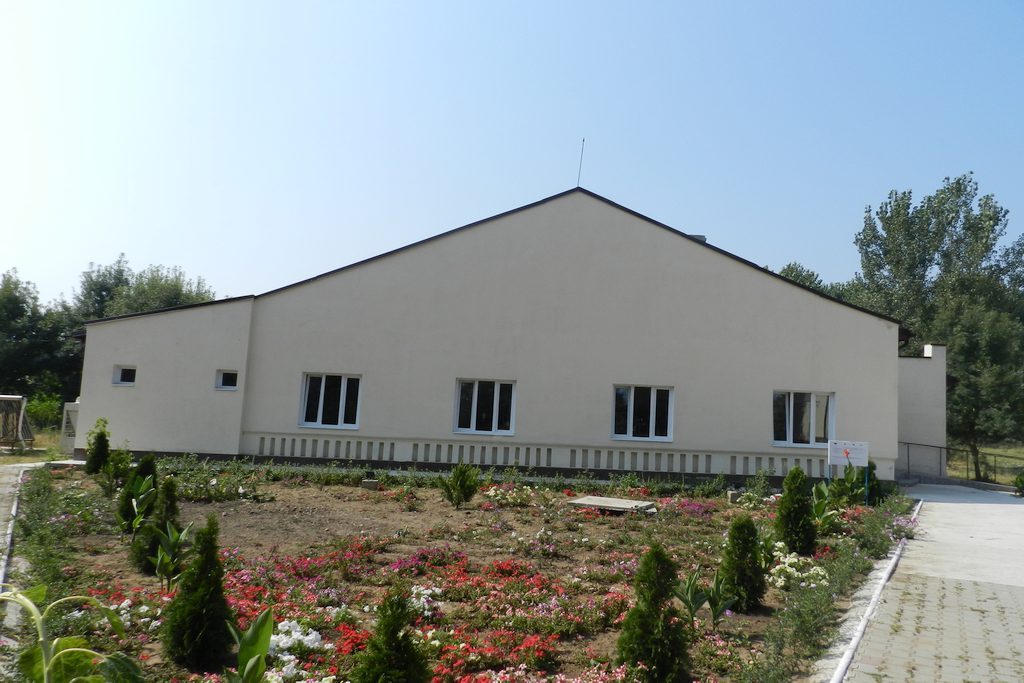

The Museum Mitre Arambașa from Dăbuleni was inaugurated in the year 2016, having at its base an investment supported financial by the means of the programs of the European Union. Mitre Arambașa was one of the biggest culture people from Oltenia. He also contributed to the execution of essays, prose, being passionate of archeology and research, an active participant at the cultural and spiritual life of Bechet, the city in which he lived throughout his existence (1924 – 2004).
Dăbuleni was known in the XVth century under the name of Recica – Dăbului. The oldest documentary testimony about the village Dăbulebi dates back to the 5th of June 1494 during the time of the prince Vlad Călugăru. In the XVth century, Recica Dăbului was nothing but an island in the middle of the properties of the Craiovești. On the 10th of September 1533, the prince of Wallachia, Vlad Vintilă from Slatina, strengthens the reign of Peia Portar in Recica Dăbului.
Starting with the 15th of June 1543, Recica Dăbului, a free village of freeholders transforms into a dependent aristocrat village, but its inhabitants become Romanians on the property of the Brâncoveni aristocrats. In 1664, the property Recica Dăbului gets in the possession of Preda Brâncoveanu, son of David the court marshal. Together with the arrival as prince of Constantin Brâncoveanu, at 1688, the village Dăbului becomes a prince village. Constantin Brâncoveanu occupies the property of Dăbului until 1714 when he is decapitated. In 1713 Constantin Brâncoveanu gave as dot to his son Radu the property of Dăbului with all the slaves on it. In 1714 he is decapitated. In the second half of the XVIIIth century, the property of Dăbului was under the possesion of Manolache Brâncoveanu.
In the proximity period of the revolution from 1821, the village Dăbului was commanded by the ban Grigore Brâncoveanu, the son of Manolache Brâncoveanu. Being old and without descendants, Manolache Brâncoveanu, the owner of the property Dăbului adopted in 824 Zoița Mavrocordat, the niece of the sister from the part of his wife, Safta Brâncoveanu, who will get married with Gheorghe Bibescu, who became the prince of Wallachia. On the 27th of April 1832, Grigore Brâncoveanu dies and leaves by testament his entire wife’s fortune, Safta Brâncoveanu. In 1835 there are set the basis of the foundation Banesei Safta Brâncoveanu, named the Brâncovenesc Hospital Dăbuleni. In the year 1909 starts the construction of the hospital from Dăbuleni, hospital which was set into function on the 5th of June 1911. In 1929, the Trusteeship of the Brâncovenești Constructions leaves the common because of the fact that he receives a double surface in Balta Brăilei, the common being left to the inhabitants of the Dăbuleni commune.
The last descendant, the prince Constantin Basarab Brâncoveanu, the first bishop of the Brâncovenești Constructions, will leasehold for a period of 50 years, with the right of extensions, paying the lease of 1 RON annually, a portions of 30 ars in order to build the place of a school which will be called ”Vodă Constantin Brâncoveanu”, the inauguration taking place on the 29th of August 1934, today the School no. 1 Dăbuleni. On the territory of the Dăbuleni, “in the valley” there existed before the Second World War a humid area, periodically alimented by the outflow of the water of the Danube, with many everglades and rush-bed, the place where the people fished and where they could furnish reed and cat tail for using in the household. This place is known today under the name of “in the everglade”. The area was modified following the drainages practiced by the communist regime, becoming adequate for agriculture (corn, maize and melons).
